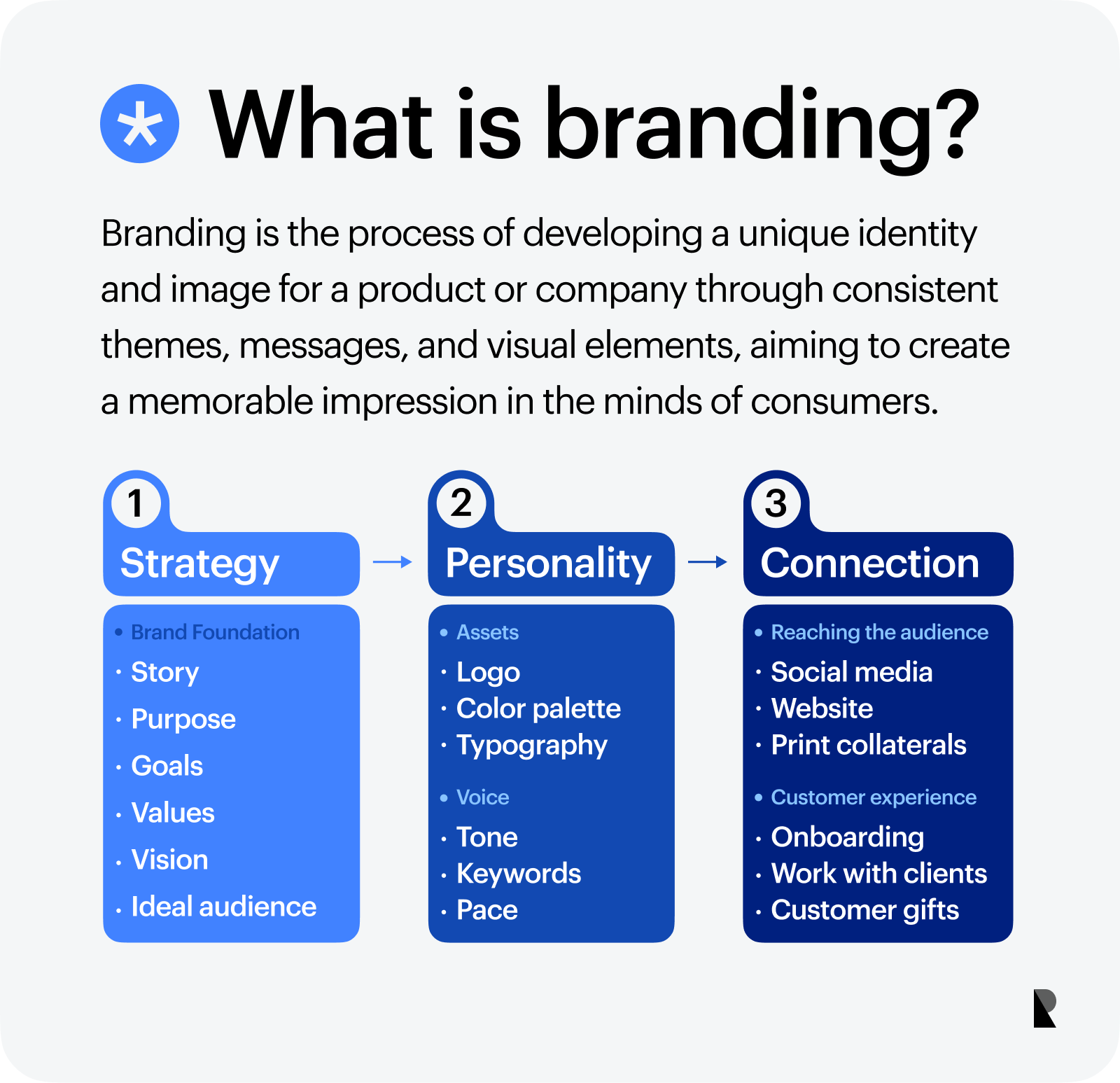The Role of Robust Branding in Differentiating Your Service from Rivals
The Power of Robust Branding: An Overview to Enhancing Your Brand name's Strength
A distinct brand name identification not only sets a firm apart yet likewise fosters count on and loyalty amongst consumers. Numerous organizations forget important techniques that can additionally intensify their brand's strength.
Understanding Brand Identity
A brand name identification incorporates the unique aspects that identify a company from its competitors and resonate with its target market. This identification is built with various elements, consisting of aesthetic aspects, messaging, and general brand name experience. A natural brand name identity not just interacts what a firm stands for but additionally builds recognition and loyalty amongst consumers.
Central to brand identification are aesthetic components such as logos, color design, and typography. These parts create a visual depiction of the brand that can evoke certain feelings and assumptions. Uniformity across platforms reinforces brand name acknowledgment and cultivates trust.
Additionally, the messaging related to a brand name, consisting of taglines and interaction style, plays a pivotal duty in forming its identity (Robust Branding). The intonation and language made use of can communicate the brand name's individuality, whether it is specialist, playful, or cutting-edge
Finally, the total brand experience, encompassing client interactions and touchpoints, affects just how consumers perceive the brand. A consistent and positive experience promotes a strong brand identification that can sustain market changes and competition. Overall, a distinct brand identity is necessary for developing a significant presence in today's dynamic marketplace.
Building Emotional Links
Developing a solid brand name identity serves as a structure for cultivating psychological connections with consumers. By straightening these worths with the consumers' ideas, brand names can produce a sense of common function.
Storytelling plays a vital function in this process. Brands that tell authentic and relatable tales can evoke feelings, enabling consumers to see themselves in the brand name's trip. In addition, incorporating visuals that reflect the brand name's essence can additionally grow psychological interaction.
Another reliable technique is to individualize client communications. Customizing experiences based on consumer preferences cultivates a sense of belonging and relevance. Engaging with customers through social media systems can also improve these psychological connections, as it gives a room for dialogue and area building.
Inevitably, brands that prioritize psychological links are more probable to cultivate lasting connections, resulting in increased customer retention and advocacy. By developing significant interactions, brand names can change consumers right into dedicated supporters, driving long-lasting success.
Uniformity Across Networks
Maintaining consistency across all channels is important for strengthening brand identity and count on. When consumers experience a brand, they expect an uniform experience, regardless of the system.
To attain this, companies need to develop clear brand name standards that detail the use of logos, color combinations, typography, and tone of voice. These standards function as a referral for all employee and outside partners, guaranteeing uniformity across advertising and marketing products and consumer interactions.
Furthermore, routine audits of all communication networks can aid recognize disparities and locations for enhancement. By actively checking these networks, brand names can quickly deal with disparities, thus maintaining a natural identity.
Ultimately, a regular brand name presence not just improves recognition yet also fosters a sense of integrity among consumers. When consumers know what to anticipate, they are most likely to engage with and advocate for the brand name, solidifying its placement in a competitive industry.
Leveraging Brand Narration
Brand name narration offers as an effective device for interesting consumers on a much deeper psychological degree. By weaving stories that show the brand name's values, goal, and individuality, business can develop an authentic link with their audience. An engaging brand name story goes beyond mere item features, inviting customers to enter into a larger story that reverberates with their own experiences and desires.
To successfully leverage brand narration, businesses have to identify their special voice try this web-site and core message. This narrative ought to be continually communicated with various networks, making certain positioning with the brand name's general identification. Engaging tales can be shared through multiple styles, consisting of social media, blogs, videos, and click resources ads, enabling brand names to get to customers where they are most responsive.

Measuring Brand Strength

To properly gauge brand strength, businesses can employ quantitative techniques such as analytics and studies devices. Studies can analyze brand name recognition and customer sentiment, while analytics can track interaction on digital platforms. Furthermore, Web Promoter Score (NPS) acts as a valuable metric to assess client loyalty and the probability read here of suggestions.
Qualitative information, collected with focus groups or social media sites paying attention, can match quantitative findings, providing a deeper understanding of customer understandings. Moreover, tracking market share and sales growth can better light up the brand's affordable standing.
Inevitably, a detailed technique to measuring brand name stamina involves both quantitative and qualitative evaluation. By constantly examining these metrics, brands can make enlightened decisions to enhance their positioning, adjust to consumer choices, and eventually strengthen their market visibility.
Conclusion

Last but not least, the overall brand name experience, incorporating consumer interactions and touchpoints, influences exactly how customers regard the brand name. Brand names that narrate authentic and relatable stories can stimulate feelings, allowing consumers to see themselves in the brand name's trip. Ultimately, by leveraging brand storytelling, services can cultivate commitment, inspire advocacy, and cultivate an area around shared values, thus improving their general brand stamina.
While developing a solid brand name identity is critical, gauging brand name strength is equally important to evaluate its effectiveness and effect in the market (Robust Branding). Brand name stamina includes different metrics, consisting of brand understanding, client loyalty, and perceived value